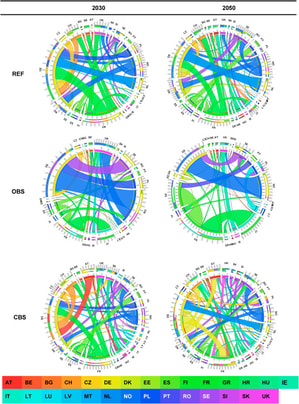
Hauke T.J. Henke, Francesco Gardumi, Mark Howells, The Open Source electricity Model Base for Europe - An engagement framework for open and transparent European energy modelling, Energy, 2021, 121973
The transition to a low carbon energy system as laid out in the Paris Agreement and the European Green Deal presents challenges that involve society at all levels from planners to consumers. A key challenge is the communication across these levels. Tools to foster engagement and discussion between the different actors are open-source models with a low threshold for uptake. This paper presents the Open-Source electricity Model Base for Europe an electricity sector engagement model covering all member states of the EU, Norway, Switzerland and the United Kingdom. Built in OSeMOSYS and available on GitHub, the model provides a starting point into energy systems modelling and can be further developed in a collaborative manner. It enables non-experts to develop an understanding of energy systems models and energy planning. Thereby, it can serve as an engagement tool to carry the debate on the future of the European power system beyond the academy, which might contribute to finding societal consensus on how to decarbonise our energy system. The model allows dynamic power sector expansion analysis of the European power system till 2050. It can be used for scenario analysis and is expandable to other sectors to analyse the benefits of sector coupling.
The transition to a low carbon energy system as laid out in the Paris Agreement and the European Green Deal presents challenges that involve society at all levels from planners to consumers. A key challenge is the communication across these levels. Tools to foster engagement and discussion between the different actors are open-source models with a low threshold for uptake. This paper presents the Open-Source electricity Model Base for Europe an electricity sector engagement model covering all member states of the EU, Norway, Switzerland and the United Kingdom. Built in OSeMOSYS and available on GitHub, the model provides a starting point into energy systems modelling and can be further developed in a collaborative manner. It enables non-experts to develop an understanding of energy systems models and energy planning. Thereby, it can serve as an engagement tool to carry the debate on the future of the European power system beyond the academy, which might contribute to finding societal consensus on how to decarbonise our energy system. The model allows dynamic power sector expansion analysis of the European power system till 2050. It can be used for scenario analysis and is expandable to other sectors to analyse the benefits of sector coupling.


